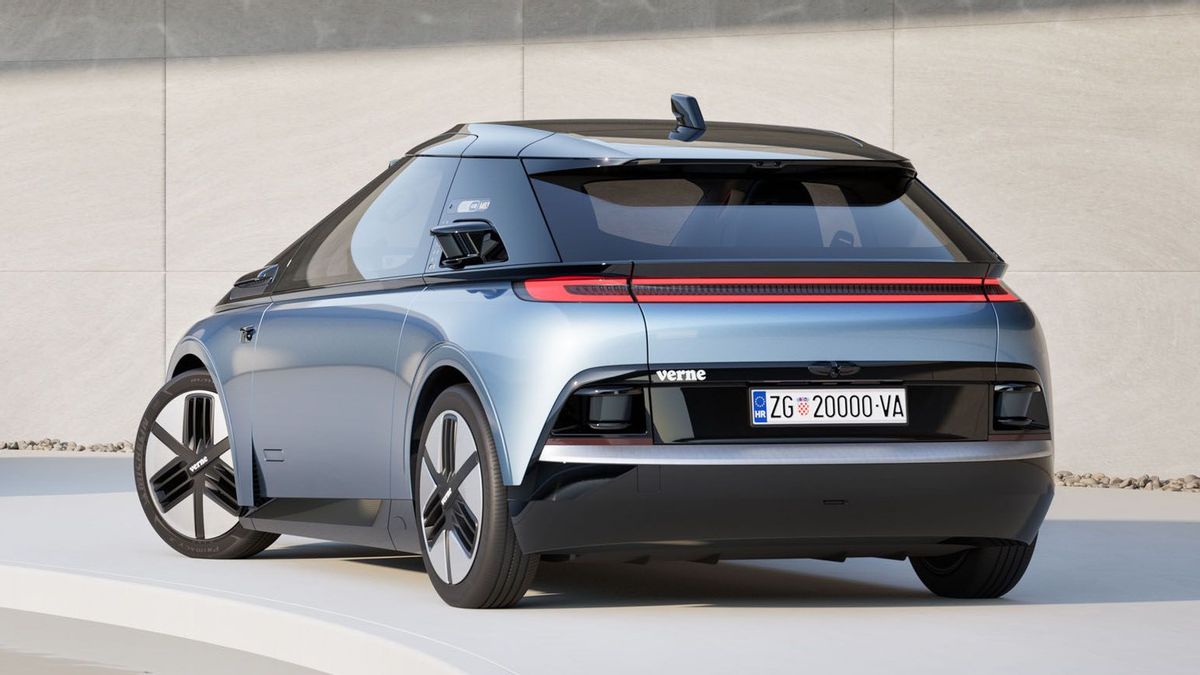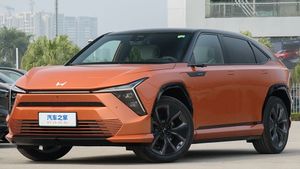JAKARTA - The Rimac automotive manufacturer, known as the luxury electric car manufacturer, announced the presence of Verne, a new division focused on autonomous taxi services. Interestingly, this future taxi made by Verne has an unusual design, namely a two-passenger hatchback!
Verne is designed to prioritize comfort and spacious cabin space. No pedals, steering wheels, but there are sliding doors designed not to block traffic during pick-up and delivery on city streets. In fact, it is claimed to have room more spacious than Rolls-Royce. Verne's "big extra" seat has five different position settings, suitable for work or rest on the way.
Forget traditional dashboards! Instead, Verne presents a large 43-inch touch screen that dominates the interior. This screen can be used for entertainment, such as watching videos, or displaying travel information.
"We want to build an interior that looks more like a living room than a car cabin," said Adriano Mudri, a Verne designer who also designed Rimac Nevera, as reported by The Verge, June 27.
Meanwhile, reported by Autocar, June 27, the choice of only two passenger seats is based on research showing that "nine out of ten taxi trips are used only by one or two people."
Verne is also integrated with a taxi booking special application. Through this application, users can adjust cabin temperature preferences before the arrival of a taxi. In fact, the interior aroma can be chosen as desired!
Furthermore, Verne taxis are built on a new, very adaptive electric car platform. This means that they can later be developed into various variants according to regional needs. This platform is designed to operate "in different locations, different types of roads, in diverse weather conditions, and even take into account local driving styles."
For the autonomous driving system, Verne is working with Mobileye, an Israeli specialist company owned by chip giant Intel. Mobileye itself is well known for the driver assistance technology used by well-known car manufacturers such as Geely and Volkswagen Group.
Verne's own hatchback design comes first from the interior. This means that the exterior is designed to accommodate the cameras and sensors needed for the autonomous driving system, as well as optimizing aerodynamic performance.
"We have integrated cameras, radar, short- and long-distance lidars, along with the cleaning system. At the same time, we can simplify the appearance by removing the typical features of vehicles driven by humans. We removed the windshield and side mirrors. This makes aerodynamic performance more efficient and makes cleaning easier," concluded Mudri.
The initial plan, Verne's autonomous taxi service will begin in Zagreb, Croatia, in 2026. England and Germany will follow in 2027, as the first two cities of 11 other cities that have collaborated with Verne. In preparation, a 'brothership' will be built in each city, serving as a headquarters for vehicle inspection, maintenance, and charging.
The English, Chinese, Japanese, Arabic, and French versions are automatically generated by the AI. So there may still be inaccuracies in translating, please always see Indonesian as our main language. (system supported by DigitalSiber.id)









